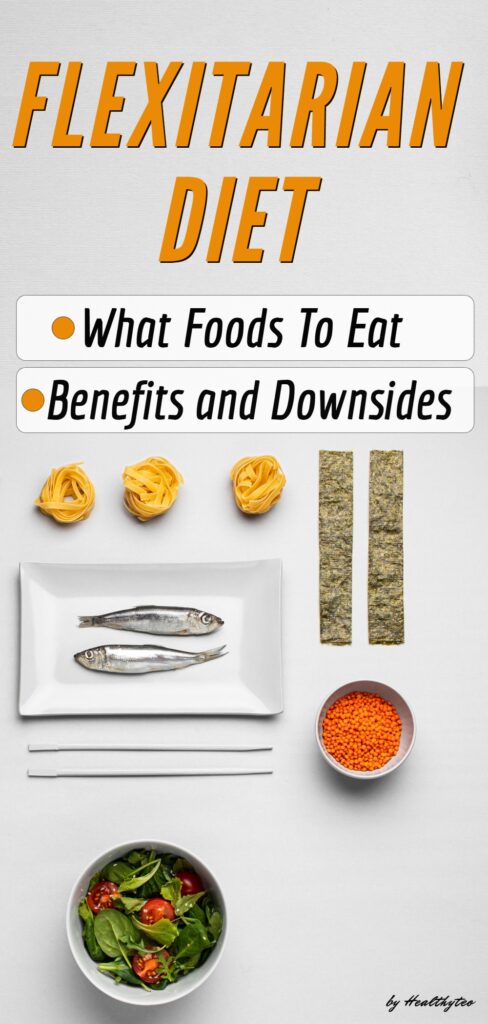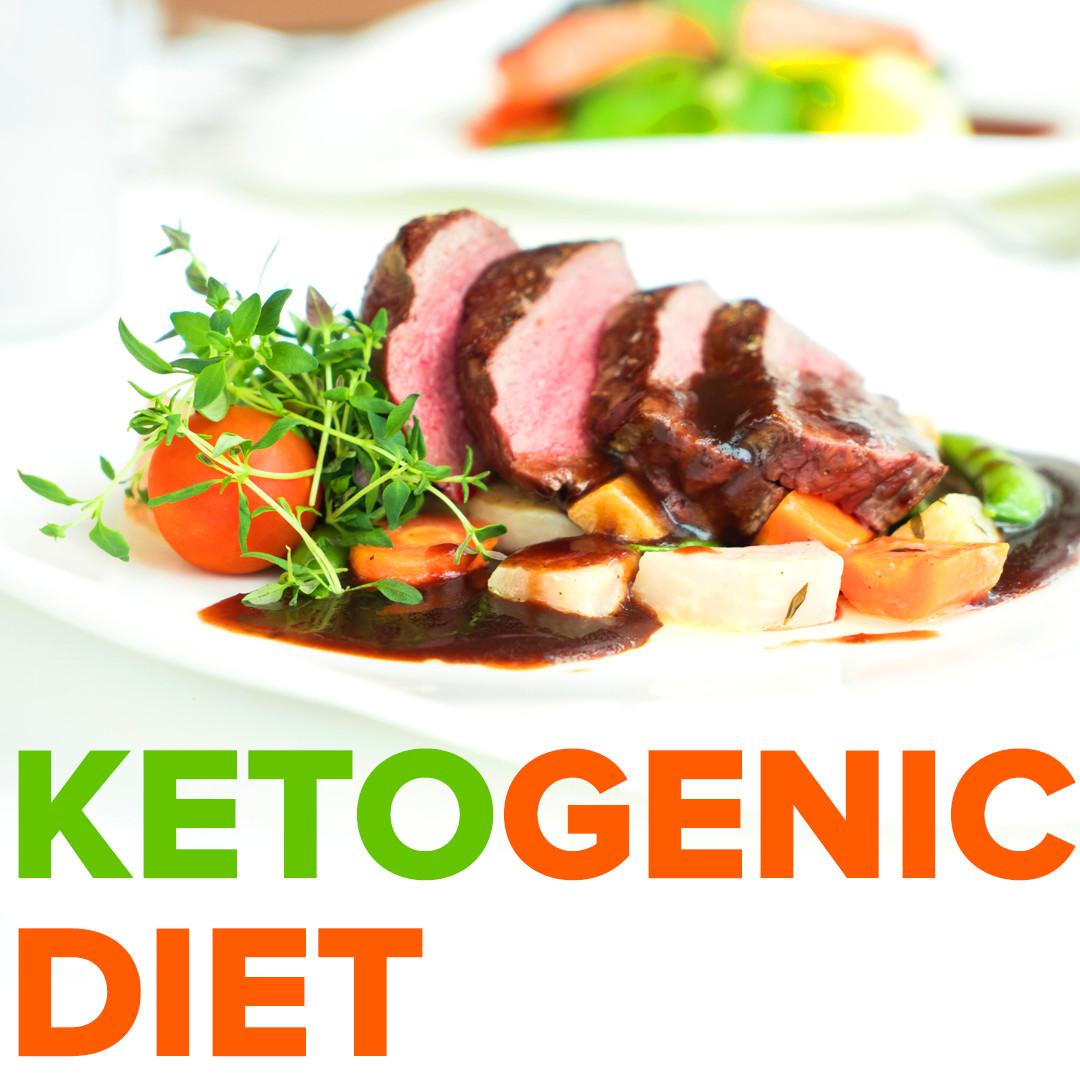How to start with the Flexitarian Diet and what to expect of this semi-vegetarian way of eating
Are you tired of strict diets and counting calories? Then this diet is just for you. Find out what is the Flexitarian Diet and how to follow this flexible way of eating that encourages you to combine plant-based foods and meat.
In this article, we will introduce you the flexitarian eating, what are the benefits and downsides of this diet, and also how to follow if you decide to change your diet plan and accept this new way of eating.
This post may contain affiliate links, which means we may receive a small commission, at no cost to you, if you make a purchase through a link. For more information, please see our disclosure.
What is the Flexitarian Diet?
The Flexitarian Diet is a less rigid form of a vegetarian diet, that encourages mostly plant-based foods and allowing to incorporate meat and other animal products into your meal plan, just in smaller quantities than you may be used to now.
The term Flexitarian comes from a combination of two words: flexible and vegetarian. This term was coined by registered dietitian Dawn Jackson Blatner when she released her book “The Flexitarian Diet: The Mostly Vegetarian Way to Lose Weight, Be Healthier, Prevent Disease and Add Years to Your Life”.
In her book, she says that this is not a strict diet plan, but rather a way of eating that is healthier and more lenient.
The core of the Flexitarian Diet is that you don’t have to eliminate meat completely to get all the benefits associated with vegetarianism. You can be a vegetarian but sometimes when you can’t resist you can eat a burger or a steak.
The Flexitarian Diet has no rules or numbers that you should follow on calories or macronutrients.
Main principles of The Flexitarian Diet
- Eat mostly vegetables, fruits, legumes, and whole grains.
- Incorporate meat and animal products from time to time.
- Get the proteins from plants instead of animals (lima beans, green peas, spinach, asparagus, broccoli…)
- Eat more natural forms of food
- Limit sweets and added sugars
In the 2020 Best Diets Ranking U.S. News and World Report, the Flexitarian Diet is in 3rd place after the Mediterranean and DASH diet.
| Flexitarian Diet Scoreboard |
|---|
| Weight Loss 3.5/5 Healthy 4.7/5 Overall Score 4.1/5 |
Many people follow this philosophy of eating because there are no rigid rules and this diet is for everyone who wants to eat a nutritious diet but doesn’t want to give up their favorite meat indulgences.
Now when we know what is the Flexitarian Diet it is time to find out how it works and how you can start practicing this diet.
How it works
If you decide to follow this diet you should focus on eating more vegetarian meals, and consume some meat-based meals throughout the week.
A five-week flexitarian meal plan provides breakfast, lunch, dinner, and snack recipes.
It’s called a three-four-five regimen.
- Breakfast choices around 300 calories
- Lunches 400 calories
- Dinners 500 calories
- Snacks 150 x 2
- Total 1,500 calories
Depending on your gender, level of physical activity, height, and weight you can change this plan and intake more or fewer calories.
You can find great recipes to start with Flexitarian Diet in this book: 101 Flexitarian Recipes from the Pollan Family. These are mostly vegetarian recipes, but we are sure that you will find many interesting meals here, even if you don’t want to follow the Flexitarian Diet.
How much meat you can eat on Flexitarian Diet?
Eating meat on Flexitarian Diet is allowed and in her book, Blatner suggests that if you are new to this diet plan or also called beginner flexitarian you should avoid eating meat two days a week. During the remaining five days, you shouldn’t eat more than 26 ounces (oz) of meat in total.
The next level of advanced flexitarian cuts meat consumption even more and it is recommended to eat vegetarian meals three to four days a week and consume no more than 18 oz of meat total during the rest of the week.
When you reach the final level, called expert flexitarian it’s recommended to consume meat only two days a week no more than 9 oz.
We must mention here that when it comes to eating meat on a Flexitarian Diet the days that you do eat meat don’t have to be consecutive.
If you can’t remember the ounces of meat here is a simple way to remember:
- Beginner Flexitarian: 6-8 meatless meals / 21 total meals each week
- Advanced Flexitarian: 9-14 meatless meals / 21 total meals each week
- Expert: 15+ meatless meals / 21 total meals each week
What foods to eat on a flexitarian diet?
Compliant Foods
- Vegetables
- Fruits
- Plant-based proteins
- Whole grains
- Dairy
- Eggs
- Herbs, oils and spices
- Meat (in moderation)
Non – Compliant Foods
- Added sugar (in excess)
- Meat (in excess)
- Refined carbs (in excess)
Foods to eat on the Flexitarian Diet
- Vegetables: Greens, bell peppers, green beans, carrots, cauliflower, peas, corn, sweet potato…
- Fruits: Apples, berries, oranges, grapes, cherries…
- Proteins: Tofu, soybeans, tempeh, legumes, lentils
- Nuts, seeds, and other healthy fats: flaxseeds, chia seeds, almonds, walnuts, cashews, pistachios, avocados, peanut butter, olives, coconuts.
- Plant-based milk alternatives: Coconut, almond, soy, and hemp milk.
- Herbs, spices, and seasonings: Oregano, mint, thyme, cumin, turmeric, ginger.
- Beverages: Still and sparkling water, coffee, tea.
Recommended animal products:
- Fish: Wild-caught
- Poultry: Organic, free-range or pasture-raised
- Eggs: Free-range or pasture-raised
- Meat: Grass-fed or pasture-raised
- Dairy: Organic from grass-fed or pastured animals
Foods to minimize on the Flexitarian Diet
Highly processed foods, refined grains, and added sugar are foods that you should avoid when you decide to follow the Flexitarian Diet.
- Refined carbs: White bread, white rice, croissants, bagels.
- Processed meats: Sausage, bacon, bologna.
- Added sugar and sweets: Soda, cookies, cakes, donuts, candy.
- Fast food: Burgers, fries, milkshakes, chicken nuggets.
3-Day meal plan to start eating flexitarian
This 3-Day meal plan provides ideas to get you started with flexitarian eating and to get to know better what a flexitarian diet is and how to make a combination of foods.
Day 1
- Breakfast: Steel-cut oats with apples, milled flaxseed, and cinnamon.
- Lunch: Market bowl with chicken or chickpeas, chopped kale or tomatoes, roasted sweet potato cubes, and ranch dressing.
- Dinner: Tacos with seasoned white fish or lentils, corn tortilla, cabbage slaw, guacamole, and salsa.
- Snack: Apple and pecans.
Day 2
- Breakfast: Whole grain toast with avocado and poached eggs.
- Lunch: Burrito bowl with brown rice.
- Dinner: Zucchini noodles with tomato sauce and white beans.
- Snack: Grape tomatoes and mozzarella stick.
Day 3
- Breakfast: Green smoothie with 2% plain kefir, rolled oats, banana, and spinach.
- Lunch: Asian bowl with edamame, coleslaw mix, quinoa, and ginger dressing.
- Dinner: Burger night with beef, sweet potato fries, and veggie dippers with ranch dressing.
- Snack: Dark chocolate and berries.
The great thing about Flexitarian Diet is that you can try every vegetarian recipe that you can find in recipe books, online or some great recipes recommended by vegetarian friends.
There is no strict recipe or plan that you should follow. These meals mentioned above are just a suggestion that will help you to start with flexitarian eating. It is up to you what to eat just keep in mind the intake of meat, as we mentioned above here in this article.
Possible benefits of The Flexitarian Diet
Flexitarian eating is a great option for someone who wants to adopt a healthier lifestyle because it emphasizes plants without being anti-meat.
It is also recommended for former vegans or vegetarians who may have experienced nutritional deficiencies as a result of going meat-free.
Because there is no clear definition of this diet and there is no specific research just on this type of eating, research on vegan and vegetarian diets is helpful in highlighting how semi-vegetarian diets may promote health.
Here is a closer look at some of the possible benefits of flexitarian eating.
Decreases Risk for Heart Disease
A study from 2013 where 45,000 adults were followed over 11 years showed that vegetarians had a 32% lower risk of heart disease compared to non-vegetarians. This comes from the fact that vegetarian diets are rich in fiber and antioxidants that may reduce blood pressure and increase good cholesterol.
Another meta-analysis shows that vegetarians have an average systolic blood pressure of almost seven points lower than that of people who eat meat.
We must mention that all these studies are for vegetarian diets, and it is hard to be sure if the Flexitarian Diet would have the same effects on heart health.
Because flexitarian eating is meant to be primarily plant-based and will likely have benefits similar to vegetarian or vegan diets.
Reducing the Risk Of Type 2 Diabetes
A study published in the Journal of the American College of Nutrition where 74 participants consumed the same amount of calories for six months, except some of them went on a vegetarian diet, and others on a diet that emphasized reducing sugars, cholesterol, refined carbs, and saturated fat.
The results showed that a vegetarian diet (similar to flexitarian eating) was more effective at reducing the risk of type 2 diabetes than a diabetes-friendly diet.
Another interesting thing that happened is that people who followed a vegetarian diet lost more subcutaneous fat (the fat under your skin), subfascial fat (the fat that lines your muscles), and intramuscular fat (the type stored inside your muscles themselves).
This fat stored in your muscles can impact your metabolism and lead to insulin resistance and even type 2 diabetes.
Eating a healthy diet, predominantly plant-based may help prevent and manage diabetes because plant-based diets aid weight loss and contain many foods that are high in fiber and low in unhealthy fats and added sugar.
Can help with weight loss
If you decide to follow the Flexitarian Diet you will limit, processed, high-calorie foods and eat more plant foods that are lower in calories.
By eating a lot of fruits, vegetables, whole grains. you’ll likely feel full on fewer calories than you’re accustomed to, which makes shedding pounds much easier.
Many studies show that people who follow a plant-based diet may lose more weight than those who don’t.
Most of the studies show that people who follow vegan diets tend to lose the most weight, compared to vegetarians and omnivores.
Because the Flexitarian Diet is closer to a vegetarian diet than a vegan one, it may help with weight loss but not as much as a vegan diet would.
Nutrition
It’s more likely that you will meet all your nutrient needs on the Flexitarian Diet than on any other diet because this type of eating embraces all food groups.
If we make a comparison with a vegetarian and vegan diet, they may fall short in omega-3 fatty acids, especially DHA found in fish.
A study published in the Journal of the Academy of Nutrition and Dietetics found that more than 50% of vegetarians in one group reported zero intakes of DHA.
Flexitarian eating as we mentioned above is a flexible way of eating and consuming fish regularly can provide a better overall nutrient balance.
Flexibility and cost
The flexitarian way of eating is very flexible, since all foods fit into this diet it’s very easy to make meals with ingredients that you like.
This plan also doesn’t require costly meal replacements or special recipes, you can easily choose meals that fit in your budget.
The best thing is that you can still go to a restaurant or friend’s dinner party while still focusing on the core principles of this diet.
Side effects of eating less animal products and meat
Potential downsides of eating less meat
Due to low meat intake, there are chances of iron deficiency, and that all depends on how frequently you include meat in your Flexitarian Diet.
To avoid this condition you need to pay extra attention to adding more plant-based iron sources: lentils, beans, soy, leafy greens, and whole grains.
Poorly planned vegetarian diets can be low in nutrients such as protein, zinc, iron, calcium, vitamin B12, vitamin D, and omega-3 fatty acids. But a well-designed plan can avoid these deficiencies.
Flexitarian Diet unlike strict vegetarian or vegan diets allows meat and dairy completely. So you can meet your needs for protein from occasional meat or fish, vitamin D from milk, calcium from yogurt, cheese, zinc from seafood, omega-3 fatty acids from fish, and seafood.
When it comes to vitamin B12, which can only be found in animal products it is recommended to take supplements if you decide to eat less meat because this is the biggest problem when it comes to vegetarian diets.
Eating flexitarian gives you the flexibility to consume varying amounts of animal products and eat. If the diet is well planned and includes a variety of whole foods, these nutritional deficiencies should not be a concern.
Additional information for people with diabetes
Many plant-based protein sources such as beans and lentils are also rich in carbohydrates. The total carb count on your meals may be a little higher which may affect blood sugar levels.
If you want to follow the flexitarian Diet and have diabetes it’s recommended to consult with a dietitian who can help you plan meals that fit the correct carb counts for your body.

What to expect if you decide to follow the Flexitarian Diet
The semi-vegetarian Flexitarian Diet represents a way of life and it’s not a fad, short-lived diet. If you decide to incorporate flexitarian eating you’ll focus on adding more plant-based foods, while slowly lowering your intake of meat and animal products.
Following the Flexitarian Diet can help you to improve your overall health, provide a sense of well-being, including more energy and less fatigue. Eating flexitarian may aid in weight loss and reduce the risks of heart disease and diabetes.
In the end, you will be eating healthier food, this diet doesn’t support processed foods that are high in sodium, sugar, and unhealthy fats.




